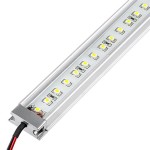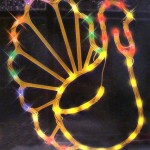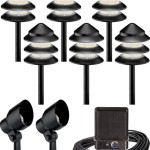Outdoor Photography Lighting Techniques
Outdoor photography presents photographers with a unique set of lighting challenges and opportunities. Unlike indoor settings, where artificial light sources can be controlled, natural light reigns supreme in the outdoors. Mastering how to work with natural light is crucial to capturing stunning images in the vast and ever-changing outdoor environment. This article explores essential outdoor photography lighting techniques, providing insights into harnessing the power of the sun, understanding cloud cover, and utilizing reflectors and diffusers.
Understanding Natural Light
The sun, the primary natural light source, is constantly changing its position and intensity throughout the day. This dynamic nature presents both challenges and opportunities for outdoor photographers. The direction and quality of light play a crucial role in shaping the mood and atmosphere of an image.
The "Golden Hour" refers to the time shortly after sunrise and before sunset when the sun is low in the sky, casting a warm and soft glow. This light is ideal for portraiture and landscape photography, creating a romantic and ethereal atmosphere. The "Blue Hour," on the other hand, occurs during the twilight hours, characterized by a cooler and subtler blue light. It can be used to create dramatic and moody images.
The quality of light can significantly impact the look and feel of an image. Direct sunlight often produces harsh shadows, while diffused light, such as on a cloudy day, creates softer shadows and more evenly lit subjects. The angle of the sun also impacts the direction and intensity of light, influencing the appearance of textures and colors.
Mastering Cloud Cover
Cloud cover plays a significant role in shaping the quality and intensity of light available for outdoor photography. A clear, sunny day provides abundant direct sunlight, which can be advantageous for capturing vibrant colors and showcasing details. However, it also leads to high contrast, resulting in harsh shadows and blown-out highlights.
Clouds act as natural diffusers, scattering sunlight and creating a softer, more evenly distributed light source. Overcast skies create a consistent and diffused light that is ideal for portraiture, landscape, and wildlife photography. This soft and diffused light minimizes harsh shadows, softens features, and provides pleasing color balance.
While overcast skies offer a consistent and diffused light source, they can also diminish color saturation and reduce the overall drama of an image. To overcome this challenge, photographers can use polarizing filters to enhance color and contrast, and adjust white balance settings to compensate for the cool light conditions.
Utilizing Reflectors and Diffusers
Reflectors and diffusers are essential tools for outdoor photographers, allowing them to manipulate light to create desired effects. Reflectors bounce existing light onto the subject, brightening and softening shadows. Diffusers, on the other hand, soften and scatter direct sunlight, creating a more diffused and flattering light.
Reflectors come in various sizes and materials, each affecting the intensity and color of the reflected light. White reflectors provide a neutral and balanced reflection, while silver reflectors produce a brighter and more intense reflection. Gold reflectors add a warm glow to images.
Diffusers can be used to soften harsh sunlight, reduce contrast, and create a more even light distribution. They are particularly useful for portrait photography, where diffused light can create a more pleasing and flattering look. Diffusers come in various sizes and shapes, from large fabric panels to small handheld devices.
Conclusion
Mastering outdoor photography lighting techniques is a process of understanding the interplay of natural light, cloud cover, and available tools. By utilizing these techniques, photographers can capture stunning images that showcase the beauty and drama of the outdoor world. The constant change and dynamic nature of light offer endless possibilities for creativity and exploration.

Shooting Outdoors Erik Valind On Headshots In The Park
Indoor Outdoor Lighting Setups Simple Diagrams For Learning Photography

Creative Lighting Techniques For Portrait Photographers Rangefinder

How To Mix Ambient Light And Fill Flash For Outdoor Portraits

Photography Lighting Tips Create A Photo Studio Anywhere

The Best Lighting For Outdoor Photography Focus

Portrait Photography Work Neeta Shankar Private Limited Candid Wedding And Lifestyle Photographer

Westcott University Real Deal Review Quick Portraits With The Rapid Box Duo Studio Photography Lighting Portrait Setup Techniques

11 Outdoor Portrait Photography Tips For Easy Shots

Lighting Set Ups Portrait Photography Essentials Outdoor
Related Posts







